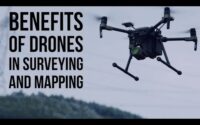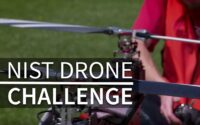Human-Carrying Drones: A Technological Frontier
Can Drones Carry Humans?
The idea of drones carrying humans is both fascinating and controversial. Proponents argue that manned drone flights could revolutionize transportation and offer new possibilities for aerial exploration. However, there are numerous challenges and concerns surrounding this concept.
Firstly, the technical aspects of building a drone capable of carrying humans are immense. The size, weight, and power requirements increase significantly compared to typical consumer drones. Moreover, ensuring the safety and stability of a drone carrying a human payload poses substantial engineering hurdles.
Secondly, regulatory frameworks would need to be reevaluated to accommodate manned drone flights. Existing laws and regulations primarily focus on unmanned aircraft, and the introduction of human-carrying drones would demand a comprehensive reassessment of airspace regulations, certification processes, and safety standards.
Furthermore, the issue of safety cannot be overlooked. Accidents involving drones can occur even without human passengers. Adding human lives to the equation raises concerns about potential risks and the ability to respond to emergencies during flight.
Cost is another significant factor. Developing, manufacturing, and maintaining human-carrying drones would require substantial investments. Additionally, the cost of training pilots and establishing infrastructure for takeoff, landing, and maintenance would add to the financial burden.
Ethical considerations also come into play. Privacy concerns could be magnified if drones capable of carrying humans become commonplace. Striking a balance between technological advancement and protecting individuals’ privacy would be crucial in any future developments.
Lastly, public perception and acceptance are essential factors. Convincing people to trust and utilize human-carrying drones would require extensive education and addressing public fears related to safety, privacy, and potential misuse.
The Feasibility of Human Transportation by Drones
Drones have come a long way in terms of technological advancements, with increased payload capacities and improved stability. However, the idea of using drones for human transportation raises several challenges and concerns.
Firstly, the issue of safety is paramount. Drones need to be capable of carrying humans without compromising their well-being. This involves ensuring sufficient redundancy in propulsion systems, implementing advanced collision avoidance algorithms, and meeting stringent safety regulations.
Moreover, the range and endurance of drones are crucial factors to consider. To be viable for human transportation, drones must have the capability to travel long distances without the need for frequent recharging or refueling. This requires advancements in battery technology and efficient energy management systems.
Another important aspect is the infrastructure required to support human transportation by drones. Adequate landing and takeoff zones need to be established, along with robust communication networks and air traffic management systems to prevent collisions and ensure smooth operations.
Furthermore, the economic feasibility of human transportation by drones cannot be overlooked. Developing and maintaining a fleet of drones capable of carrying humans would require significant investments. The cost of manufacturing, operation, and maintenance must be taken into account to assess the viability of this mode of transportation.
While the concept of human transportation by drones holds promise, it faces numerous challenges that need to be addressed before widespread adoption can occur. Technological advancements, safety regulations, and infrastructure development are crucial areas that require substantial attention and investment.
Challenges and Implications
-
Safety concerns: The ability of drones to carry humans raises significant safety challenges. -Drones need to be designed with robust safety features to prevent accidents and mitigate risks.
-
Regulatory frameworks: Current regulations are primarily focused on unmanned aerial vehicles. -The introduction of human-carrying drones necessitates the development of new rules and guidelines.
-
Technological limitations: Drones must overcome various technological challenges to safely transport humans. -These include power supply, propulsion, stability, and control systems.
-
Infrastructure requirements: Human-carrying drones would require a specialized infrastructure for takeoff, landing, and maintenance. -Investment in suitable landing pads, charging stations, and maintenance facilities would be necessary.
-
Air traffic management: Integrating human-carrying drones into existing airspace management systems is a complex task. -Coordinating flight paths, ensuring separation from other aircraft, and managing traffic flow pose significant challenges.
-
Public acceptance: Widespread acceptance of human-carrying drones might be met with resistance due to privacy and safety concerns. -Public awareness campaigns and addressing these concerns are vital for successful adoption.
-
Cost and accessibility: Developing and operating human-carrying drones could be expensive, limiting their accessibility. -Efforts must be made to reduce costs and make this mode of transportation affordable and inclusive.
-
Ethical considerations: The use of drones for human transport raises ethical questions, such as privacy intrusion and potential misuse. -Clear guidelines and regulations are necessary to address these ethical implications.
-
Training and certification: Pilots operating human-carrying drones would require specialized training and certification. -Establishing standards and ensuring the competence of operators is crucial for safety.
-
Environmental impact: Human-carrying drones could contribute to increased air traffic and carbon emissions. -Efforts to develop sustainable propulsion systems and minimize environmental impact are essential.
The Future of Human-Carrying Drones
In recent years, there has been significant progress in drone technology, leading to the emergence of human-carrying drones. These innovative aerial vehicles have the potential to revolutionize transportation and redefine how we commute.
Human-carrying drones are unmanned aircraft capable of transporting people from one location to another. With advancements in battery technology, materials, and safety features, these drones have become more efficient, reliable, and secure.
One of the main advantages of human-carrying drones is their ability to navigate through congested urban areas, avoiding traffic jams and reducing travel time. This can greatly alleviate transportation challenges in densely populated cities and provide a new level of convenience for commuters.
Moreover, the development of autonomous flight systems has made human-carrying drones safer and more accessible. These systems use artificial intelligence and advanced sensors to ensure precise navigation, obstacle avoidance, and emergency response capabilities.
Additionally, human-carrying drones have the potential to improve emergency medical services. They can quickly transport medical professionals and equipment to remote or inaccessible areas, enabling faster response times and potentially saving lives in critical situations.
However, several challenges need to be addressed before human-carrying drones become a common mode of transportation. Safety regulations and air traffic management systems must be established to ensure the smooth integration of these drones into existing airspace.
Furthermore, concerns about privacy and security need to be carefully addressed. Strict regulations and safeguards should be implemented to protect individuals’ privacy and prevent unauthorized use of human-carrying drones.



